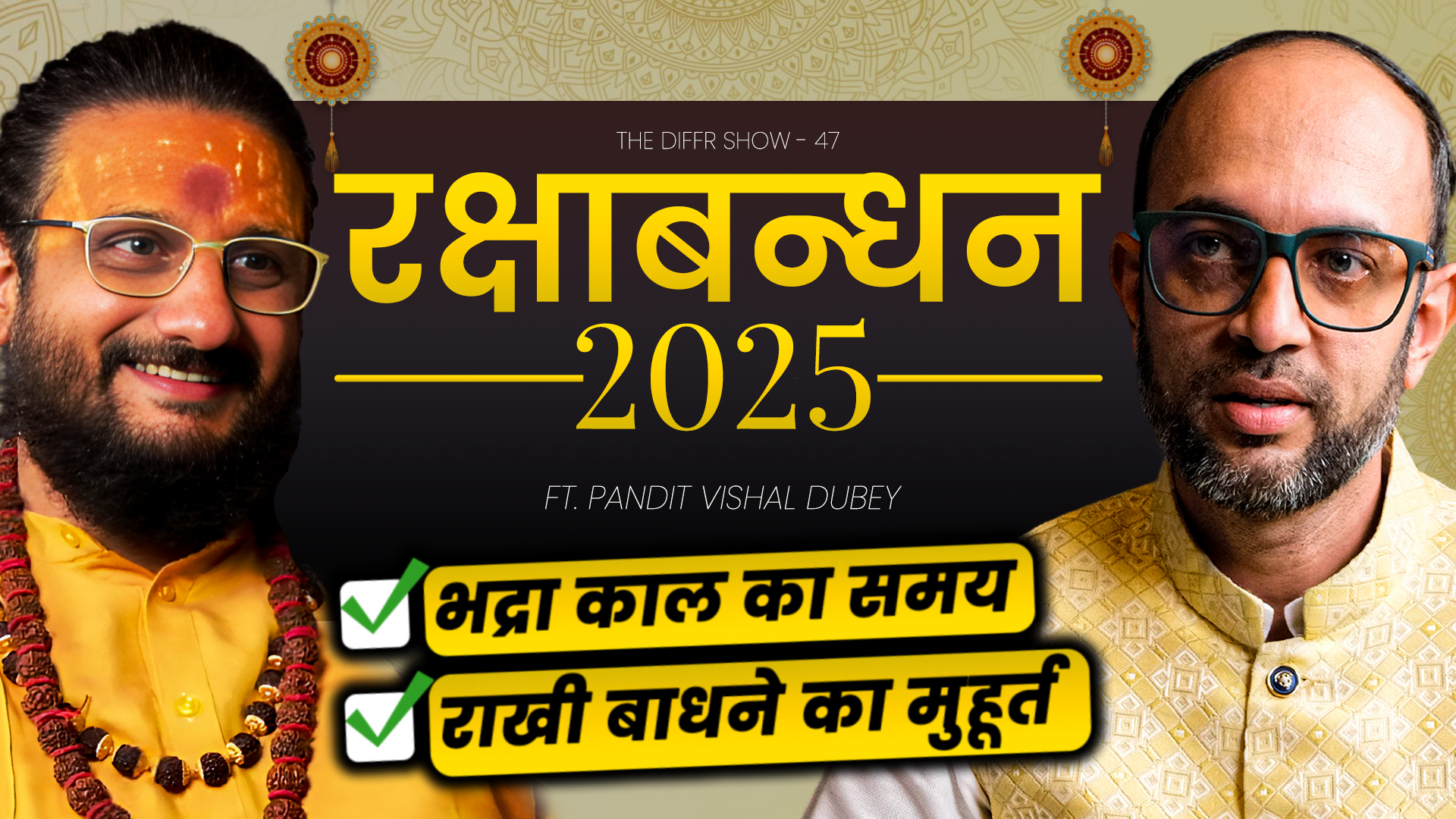Raksha Bandhan 2025: A Sacred Bond Rooted in Ritual, Emotion & Dharma | The Diffr Show Ep 47

Creative Job Platform - Find Jobs

Follow Us
Download Diffr App
1. Introduction: Rakhi Beyond Rituals
Raksha Bandhan isn’t just a festive gesture of tying a thread—it’s a powerful, spiritual symbol of protection and love. Deeply rooted in our scriptures and traditions, this festival represents not only the sacred connection between siblings but also the emotional contracts we share with those who protect, guide, and uplift us. From the story of Draupadi and Krishna to Lakshmi tying a raksha-sutra to King Bali, this bond transcends bloodlines and becomes a celebration of dharma.
2. The Power of Time: Why Muhurat Matters
In 2025, Raksha Bandhan will be celebrated on 9th September, with the Abhijeet Muhurat (12:00 PM to 12:53 PM) being the most auspicious window. As per Vedic astrology, performing sacred tasks in the right time frame ensures spiritual success. Avoid tying rakhi in random hours—especially during Bhadra Kaal, which is strictly prohibited for auspicious ceremonies.
3. Bhadra Tithi: The Time You Must Avoid
Bhadra is not just a name—it’s a time period with deep astrological impact. She is said to be the daughter of Surya and sister of Shani, known for her tamasic, disruptive nature. Our scriptures warn against conducting holy rituals like rakhi during Bhadra’s presence because her influence can bring obstacles, imbalance, or loss of the ritual’s effectiveness.
In 2025, the good news is—Raksha Bandhan is free from Bhadra, meaning you can perform the rituals peacefully on 9th September until 1:21 PM, as per the tithi. Still, it’s advised to check the exact Bhadra timings in your local Panchang every year to ensure spiritual correctness.
You Might be Interested
-
The Truth About Serums: Choosing the Right One for Your Skin
-
Keshar Farming: Growing Kesar at Home, The Future of Urban Saffron Farming
-
Deval Metal Art: Turning Scrap into Sculpture. The Art, Process, and Business of Metal Creativity
-
The Science of Healthy, Glowing Skin: Expert Insights from Dr. Swati
-
Chef Lata Tandon: The Ayurvedic Science of Food, Cooking Discipline & Timeless Kitchen Frameworks
4. Facts vs Myths: Colours, Zodiac & Designer Confusion
There’s growing confusion around zodiac-based rakhi colours—like green for Taurus or red for Aries. But shastras do not prescribe zodiac-specific rakhi colours. Traditional auspicious colours such as red, yellow, and saffron are rooted in Sanatan Dharma.
Rakhis made from plastic, glass, or synthetic materials may look modern, but without a kalawa (mouli) or sacred chant, they lose spiritual strength. Trends are welcome, but only when paired with tradition.
5. The Ritual That Matters: Mantra, Method & Bhaav
Begin the ritual by tying the first rakhi to Lord Ganesh or your ishta devata, seeking divine blessings for protection. Let the brother sit facing east, sister facing west. Tie the rakhi while chanting the sacred mantra:
“Yena baddho Bali raja danavendro mahabalah,
tena tvam prati badhnami raksha ma chala ma chala.”
Even if you can’t recite the mantra, ensure your emotions are pure. That intention is what makes rakhi sacred.
6. More Than Gifts: Take Sankalp, Not Stress
Gifts are beautiful—but never a replacement for commitment. Raksha Bandhan should also be a day to take sankalps (spiritual vows):
- I will emotionally support my sibling through all phases.
- I will never let ego damage our relationship.
- I will honor this bond even when it’s not convenient.
Whether you tie rakhi in person or virtually, it’s the bhaav (intention) that turns an act into a blessing.
7. Conclusion: Make It a Year-Round Dharma, Not a Day
This Raksha Bandhan, let’s not reduce a sacred bond to reels, emojis, or designer packaging. Tie a rakhi on your sibling, yes—but also on your work tools, your goals, even your values. It’s not just about siblings; it’s about everything you choose to protect and grow with.
Celebrate it with clarity, time, mantra, and meaning. Because the real rakhi isn’t worn on the wrist—it’s felt in the heart.



